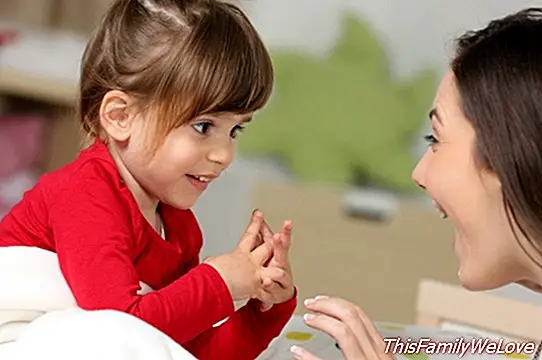Children with high abilities and their needs

Not all children are the same. Each person has their own circumstances and need their own attention, and the smallest of the house are no exception. An example is found in cases of "High capacities", minors with a demand to promote their skills.
What does it mean that a child is "High capacities"How can parents take advantage of this situation and meet the needs expressed by these children? From the Spanish Confederation of Associations of Parents of Students, CEAPA, the parents of these children are informed so that they know how to respond to what is demands from this situation.
What are high capacities?
Usually high abilities are related to intelligence. However, there is no consensus definition among all professionals and especially that this skill is the most common among all cases. East finished It makes the potential capabilities of a child in one or several areas, and may or may not materialize and specify a specific performance, a process that will depend on the family and school environment.
One of the most accepted definitions among the research community is that of three Renzulli rings. This definition highlights the following points of the high capacities:
- An above-average intellectual capacity, both in general and specific skills, manifested, among other aspects, in a capacity to learn superior to that of their peers.
- A high dedication to the task (read, solve a problem, etc.), that is, perseverance, self-confidence, commitment to the task, eagerness to achieve, etc. If the child is not motivated, this aspect may not be detected in school, and may even manifest negative attitudes towards school learning.
- High creativity, that is, the ability to respond with originality of thought, novelty, flexibility and fluidity, also manifested in their creations.
How is a child with high abilities?
CEAPA offers a series of features that define a person with "high capabilities". These are several of them:
- High intellectual capacity.
- Great ability to reason, argue and ask, as well as synthesize, conceptualize and abstract.
- High ability to understand, symbolic and abstract thinking and metacognitive skills. They understand and use symbols and abstract ideas very precisely. His capacity for non-verbal communication is high, and he can also interpret the emotions of others through non-verbal language.
- They show greater facility to automate mechanical skills, such as reading, writing, calculation, etc.
- Great ability to solve complex problems, applying their knowledge and skills and, even, sometimes, without having previously learned the operations involved in them. To find a suitable solution, they use multiple and systematic strategies. Solving a problem is a challenge for them and they face it with ingenuity.
Needs of children with high abilities
Once you have defined what a child with high abilities is, all know what needs presents CEAPA highlights the following:
- An affective security environment where to be accepted as they are, as
children with successes and mistakes, and without external pressure that forces them to succeed in all areas and to have the best grades. Like any other child, they need the affection of their parents, physical contact and that they value them for being who they are, not because of how they are, nor because of their abilities. To be accepted, listened to and respected also with their abilities, without having to hide them so as not to desacar and be rejected or to make fun of them.
- Being able to know themselves, with our help, to know the advantages and disadvantages of having high abilities and to know their own strengths and difficulties, that allow them to build a positive image of themselves.
- A social environment of respect and understanding, that accepts and stimulates them; in which they can have confidence and create bonds of friendship and belonging, and in which they help them develop socially and emotionally. A social environment in which they live and interact with other different children and with different social groups, which allows them to learn to respect and value differences, empathize with others, adapt to social norms, understand what is expected of them and the effect of their behavior, develop social skills, assertiveness and tolerance to frustration, etc.
- An enriching, stimulating, dynamic and flexible environment, both in the family and in the educational center, in which they are motivated, in which they can develop and share their concerns and curiosity and that allows them to learn and express themselves, imagine and create.Also, where they can learn independently and independently, actively participate and control their own learning, developing, researching and deepening their interests.
Damián Montero




